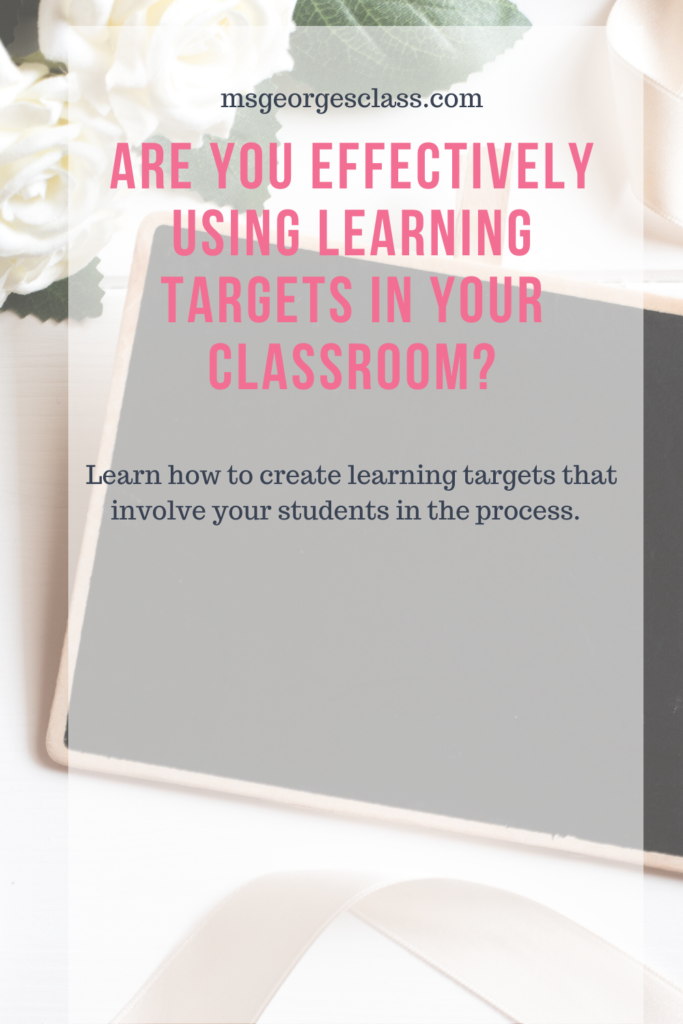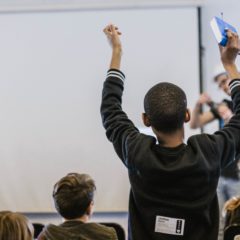
My evaluator walked into the classroom and quietly took a seat in the back of the classroom. I was just gathering the paperwork for my small reading group. I stood in front of the six students and began teaching. The evaluator walked across the room and leaned while looking at the board. She was looking to see the lesson’s learning target. The target was short and general because the reading lab students were working on MindPlay (an online reading computer program) and were separated into three reading groups. The career exploration classes, which I also teach, had a learning target that was specific and stated how they were going to be graded for completing their assignment. The evaluator read the learning target and quietly walked back to her seat. Moments after the walk-through, I received an email about the walk-through from the evaluator. The evaluator posted three questions about the learning target. Since I was very familiar with the lesson and the standard I was teaching, I was able to respond quickly.
Sharing Learning Targets with Students
Over my winter break, I purchased the book Learning Targets by Connie M. Moss and Susan M. Brookhart. This book provided so much insight and many examples of making learning targets. This book was actually on my desk when the evaluator walked into my room because I had planned to read it during my lesson plan hour. The central idea I learned from this book was: “Learning targets are student-friendly descriptions…of what you intend students to learn or accomplish in a given lesson” (9). This is repeated throughout the book in every chapter. According to the book, “The purpose of effective instruction is to promote meaningful learning that raises student achievement” (13).
To begin designing the learning target, there are four steps. Each step answers a question:
· “What are the essential knowledge (facts, concepts, and generalizations or principles) and skills (or procedures) for the lesson?
· What is the essential reasoning content for the lesson?
· What is the potential learning trajectory in which the lesson is situated?” (29)
Sharing Learning Targets with Students

Before announcing the learning targets to the students, create a strong performance of understanding, a degree of challenge, and strong criteria for success. You want the students to be prepared to achieve success with the daily lesson. The book suggests using the words mastery, proficient, basic, minimal, and no understanding when assessing students. Remember that effective teaching promotes meaningful learning and raises student achievement. Another way of looking at the learning target is to focus on these three questions: a) what is important to learn, b) how they will know when they learned it, and c) how they will be expected to demonstrate their learning (45). This may take some time to create, but it is worth all the planning to have students feel in control of their learning because they understand the expectation. In the book, the authors state: “Strong criteria precisely describe what good work looks like for the specific performance of understanding the lesson” (48). Students are more likely to achieve success if they have a rubric or expectations that are clearly stated.
The Four-Step Framework
This framework has four starter prompts that can assist you in reading the learning targets to your students. The authors suggest you read the learning targets throughout the lesson and you connect the target to future learning.
The four starter prompts of the framework are:
· “ We are learning to…
· We will show that we can do this by…
· To know how well we are learning this, we will look for…
· It is important for us to learn this (or be able to do this) because…” (52).
The first starter prompt allows the teacher to place the learning target within a student-friendly term. The second prompt includes the performance of understanding, and students will know what they have to demonstrate to show a sense of understanding. The third prompt teaches students what to look for while they are working on their assignments. The fourth prompt explains why we are learning the skill for today and the future. This prompt makes it real for students and connects the skills that professionals use on a daily basis.
How the Learning Targets Worked in My Class
I created the learning target prompts on Google Slides, laminated the worksheets, and taped them on the border of the whiteboard. I completed writing the four prompts for both classes, career exploration, and reading lab. After students entered the room and sat in their seats, I read the learning targets. I felt very confident in reading the learning targets. I had great results with both classes. My career exploration classes understood the learning targets, and they answered the questions very well on an exit slip. Every student showed me their understanding (the lesson was about graduation requirements). The reading lab students also did well with the learning target, although students struggled with explaining the central idea, which was the lesson. Students attempted to write the answer on an exit slip. More practice is needed for the reading lab students to identify the central idea of an article, but they had a clear direction of the day’s lesson.

Will I continue to write the writing prompts on the board? Yes. Students know what they are going to learn, how they are going to show the understanding, what to look for in their assignment, and how the lesson is relevant to their future. When students enter my class, they know what to expect, and they understand they can accomplish a goal using the “look for” within the lesson. There are no guessing or “I gotcha!” moments. I feel that I am setting my students to succeed within the class, and that is why I saw such positive results with my career exploration classes. I read the learning target and referenced it twice during the lesson. This practice gave my students the ability to understand and know how to show the performance of understanding.
Use the four prompts within your class and tell me if you saw growth within your classes. Did your students accomplish your performance of understanding at the end of class? Tell me in the comment section.

Work Cited
Moss, Connie M., and Susan M. Brookhart. Learning Targets: Helping Students Aim for Understanding in Todays Lesson. ASCD, 2012.




Leave a Reply